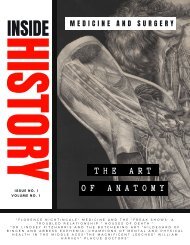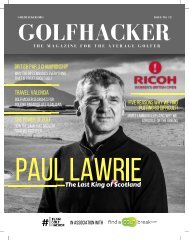Inside History: Protest. Revolt & Reform
For our next issue we take a closer look at the theme of Protest from the events of Peterloo to the fall of the Berlin. Inside we cover a whole range of historical protests and the individuals who led the charge for change. This issues includes: John Brown's raid on Harpers Ferry, The Suffragettes, Billie Holiday and the role music has played in protests, The Civil Rights Movement, Protest and Sport, We are the People: The Fall of the Berlin Wall, Bloody Sunday at Trafalgar Square, and much much more.
For our next issue we take a closer look at the theme of Protest from the events of Peterloo to the fall of the Berlin. Inside we cover a whole range of historical protests and the individuals who led the charge for change. This issues includes:
John Brown's raid on Harpers Ferry, The Suffragettes, Billie Holiday and the role music has played in protests, The Civil Rights Movement, Protest and Sport, We are the People: The Fall of the Berlin Wall, Bloody Sunday at Trafalgar Square, and much much more.
- No tags were found...
Create successful ePaper yourself
Turn your PDF publications into a flip-book with our unique Google optimized e-Paper software.
"We have got to
hold meetings,
but the only
thing you have
got to be is
militant! Militant!
And more
militant!!!"
Annie Kenney quoted by a Special Branch report on a suffragette meeting at Essex Hall, The Strand,
London, 31 January 1913 (Catalogue ref: HO 45/10695/231366) National Archives
Left: Suffragette poster urging people to vote against the Liberal government who passed the Cat and
Mouse Act (Picryl)
Still, the government was not paying attention to calls
for women’s suffrage, so more drastic action needed to
be taken. Kenney was heavily involved in theincreasingly
militant tactics of the WSPU, which included vandalism,
arson and chaining themselves to railings. In one
instance, a bomb was exploded outside the summer
home of the new Chancellor of the Exchequer (and
another future Prime Minister) David Lloyd George. The
WSPU were always careful to ensure there was no
violence inflicted on people – Lloyd George and his
family were nowhere near the home when the bomb
went off – but the destruction of property was enough
to provoke a reaction from the government, and scores
of suffragettes were marched off to prison during this
time.
The WSPU then directed their members to go on
hunger strike in prison, which meant they would refuse
to eat and let themselves become seriously ill. It was
certainly an outlandish idea but there was a degree of
genius to it – the government could not afford to let the
women die in their prisons, if for no other reason than it
would be a PR disaster. Kenney herself fully understood
the power of PR and imagery, going on hunger strike
herself and ensuring that upon her release from prison
she was seen at meetings, carried on a stretcher, too ill
to stand up. To make oneself so dangerously sick takes
phenomenal courage and commitment, qualities which
Kenney had in spades.
Events appeared to be reaching a climax. In 1913, the
government introduced the Cat and Mouse Act, which
would allow for women on hunger strike to be released
from prison and then thrown back in once they had
recovered from illness. The previous year, Christabel
Pankhurst had fled to Paris to avoid arrest and left
Kenney in charge of the whole organisation. Unrelenting
as ever, she denounced the Cat and Mouse Act and
decided that the WSPU had no intention of letting up
their militant campaigns or hunger strikes. In June 1913,
Emily Davison was killed as she tried to attach a
suffragette slogan to the King’s horse during a race in
Epsom. It is doubtful whether Davison intended to kill
herself – she had purchased a return train ticket – but
Kenney ensured she was treated as a martyr. Slowly but
surely, votes for women was edging closer. The new
Labour party were likely going to insist that all their
candidates for Parliament at the next election support
women’s suffrage, and Sylvia Pankhurst was in secret
talks with David Lloyd George.
But then, suddenly, Europe was plunged into war. The
suffragette movement was split, between those who
wanted to carry on the fight against a distracted
government and those who wanted to pause the fight
and throw their weight behind the war effort, out of a
sense of patriotism and a sense that it would be good
for their public image. Annie Kenney was in the latter
camp. Together with the Pankhurst women she toured
the country speaking in support of the war and
encouraging women to support the national effort. The
32 INSIDE HISTORY

















